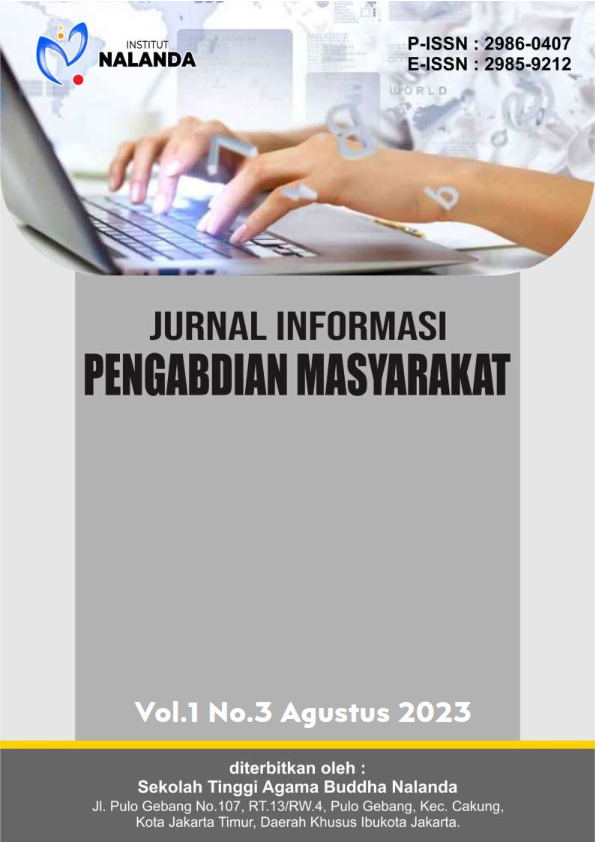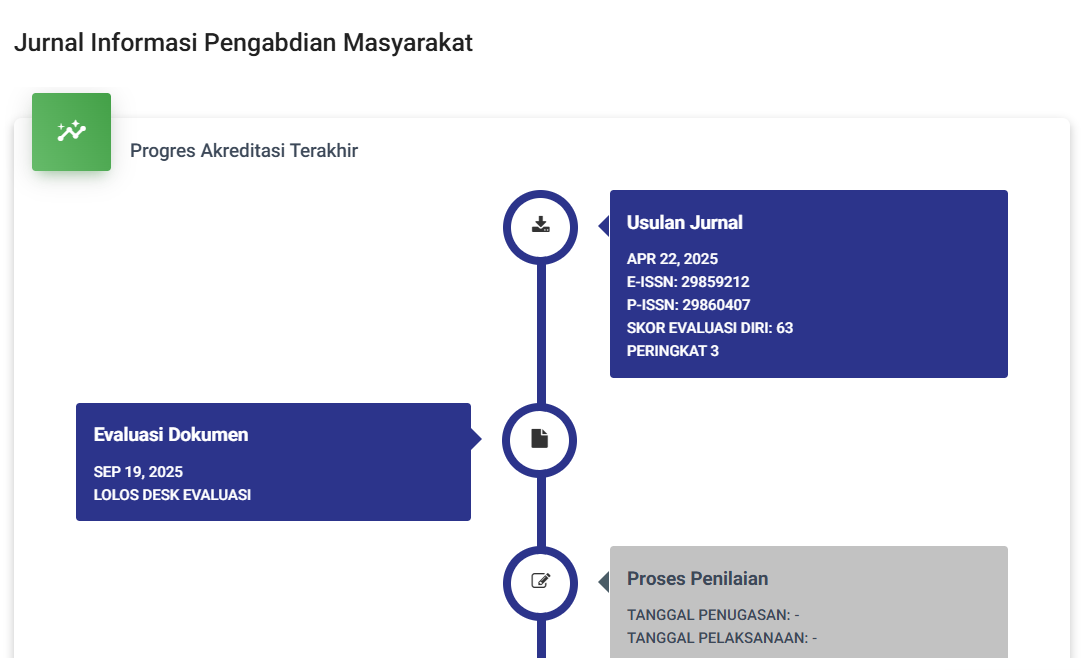Peptida Anti Kanker Membranolitik (ACPS) Pada Kanker Paru – Paru Menggunakan Metode Naïve Bayes Dan K-Nearest Neighbor
DOI:
https://doi.org/10.47861/jipm-nalanda.v1i3.297Keywords:
Classification, Data Mining, K – Nearest Neighbor, Naïve Bayes, Rapid MinerAbstract
Lung cancer is one of the most common types of disease. In this study the methods used are Naive Bayes (NB) and K-Nearest Neighbor (K-NN), which include algorithms that work well for classifying datasets. The purpose of this research is to compare the classification algorithms of Naive Bayes and K-NN, both of which are quite effective for analyzing cancer data. Rapid Miner is used together with Naive Bayes and K-NN algorithms for decision making. After the research was carried out, the results of the study using the Naive Bayes method found that lung cancer had an inactive-virtual class of 750 with a precision of 100%, an inactive-exp of 52, a precision class of 56.45%, a mod-active 75 class of 57.69% precision, and a precision of class 37 which is very active. 17% with an accuracy of all 86.56% which is included in the good classification category. While the K-nearest neighbor algorithm method, it turns out that ACPs lung cancer which has inactive-virtual totals 750 class precision 100% inactive-exp 52, class precision 56.45%, mod-active 75 class precision 57.69%, very-active 37 class precision 17% with all 93.01% accuracy, which is included in the excellent classification category. It can be seen from the two methods that we analyze, the K-nearest neighbor algorithm method, displays a classification that has a greater percentage than the Naive Bayes method, in other words the use of the K-NN method on ACPs lung cancer data is more accurate than the Naïve Bayes method.
References
AbdurrahmanTrimanto, FahmiFaqih, IdhamMuhamadIrfani, & SafirmasTimur. (2019). PenerapanDataMiningUntukEvaluasiStatusKelulusanMahasiswaFakultasTeknologiPertanianTahun2015MenggunakanAlgoritmaNaïveBayesClassifier. CC-By Attribution 4.0 International.
Farhad Khorshid, S., & Mohsin Abdulazeez, A. (2021). BREAST CANCER DIAGNOSIS BASED ON K-NEAREST NEIGHBORS: A REVIEW. Palarch’s Journal Of Archaeology Of Egypt/Egyptology , 18(4), 1927–1951.
Fariha Ramadhaniah, & Syahrizal Syarif. (2020). Studi Tinjauan Pustaka: Risiko Kejadian Kanker Paru pada Penderita Tuberkulosis Paru. Jurnal Epidemiologi Kesehatan Indonesia, 4(1). https://doi.org/10.7454/epidkes.v4i1.3410
Gusti Ira Julia, & Noer Komari. (2022). Virtual Screening Peptida Aktif Antikanker dari Myosin Ikan Gabus (Channa striata). Chemica Isola, 2(1), 84–93.
Ibrahim M. Nasser, & Samy S. Abu-Naser. (2019). Lung Cancer Detection Using Artificial Neural Network. International Journal of Engineering and Information Systems (IJEAIS), 3(3), 17–23.
Jawad Hamid Mughal, M. (2018). Data Mining: Web Data Mining Techniques, Tools and Algorithms: An Overview . (IJACSA) International Journal of Advanced Computer Science and Applications, 9(6), 208–215.
Listyalina, L. (2017). PENINGKATAN KUALITAS CITRA FOTO RONTGEN SEBAGAI MEDIA DETEKSI KANKER PARU. Respati, 12(34). https://doi.org/10.35842/jtir.v12i34.1
Maxwell, A. E., Warner, T. A., & Fang, F. (2018). Implementation of machine-learning classification in remote sensing: an applied review. International Journal of Remote Sensing, 39(9), 2784–2817. https://doi.org/10.1080/01431161.2018.1433343
Santos-Pereira, J., Gruenwald, L., & Bernardino, J. (2022). Top data mining tools for the healthcare industry. Journal of King Saud University - Computer and Information Sciences, 34(8), 4968–4982. https://doi.org/10.1016/j.jksuci.2021.06.002
Sharma, P., Mehta, M., Dhanjal, D. S., Kaur, S., Gupta, G., Singh, H., Thangavelu, L., Rajeshkumar, S., Tambuwala, M., Bakshi, H. A., Chellappan, D. K., Dua, K., & Satija, S. (2019). Emerging trends in the novel drug delivery approaches for the treatment of lung cancer. Chemico-Biological Interactions, 309, 108720. https://doi.org/10.1016/j.cbi.2019.06.033
Downloads
Published
How to Cite
Issue
Section
License
Copyright (c) 2023 Hafidh Ashil Fadhlurrahman, Alpi Parhan, Muhammad Faizal Muttaqin, Ramdan Aditya Wijaya, Ricky Firmansyah

This work is licensed under a Creative Commons Attribution-ShareAlike 4.0 International License.










